I. Introduction
There are two power resistors on hand now, with a resistance of 5 ohms and a power of 5W. One is a precision current sampling resistor. The model number is BWL. The other type is a wirewound resistor. Next, the resistance of these two resistors is measured using a Kelvin current clamp, and their thermal stability is measured using a heat gun.

2. Resistor value
Use an LCR meter to measure the winding resistance, the resistance is 5.036 ohms. Then measure the second winding resistance, the resistance is 5.030 ohms. Next, measure the resistance of the third wire winding, which is 5.019 ohms. Next, measure the 5W precision current sampling resistor. The first resistor has a resistance of 5.006 ohms. The second resistor has a resistance of 5.003 ohms. The third resistor has a resistance of 5.001 ohms. The fourth resistor's resistance is still 5.001 ohms. Without stopping, I measured the fifth resistor again and found that the resistance was 5.006 ohms. Next measure this small sampling resistor. The first resistor has a resistance of 5.001 ohms. The second resistor has a resistance of 5.002 ohms. The third resistor has a resistance of 5.000 ohms. The fourth resistor has a resistance of 5.002 ohms.
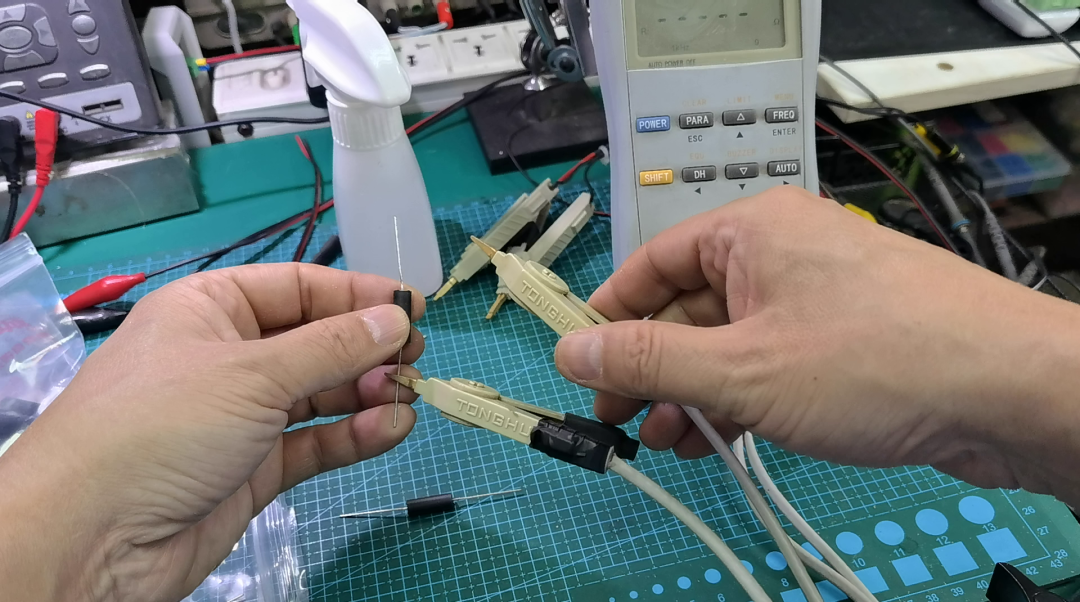
Wire wound resistance: 5.036, 5.03, 5.019
Sampling resistance (5W): 5.006, 5.003, 5.001, 5.001, 5.006
Sampling resistance (small): 5.001, 5.002, 5.000, 5.002
Through the measurement just now, we can see that the resistance accuracy of the sampling resistor is much higher than that of the wire-wound resistor. Moreover, the small sampling resistor has higher accuracy. The maximum difference between the resistance values of the four resistors is only 2 milliohms. This error is basically the same as the measurement error of the LCR meter used.
3. Thermal stability
Use a heat gun to heat the resistance being measured. The heating temperature reaches about 100 degrees Celsius. Use a thermocouple to measure the temperature of the air surrounding the resistor. Record the change in resistance of the resistor as the temperature rises and falls.
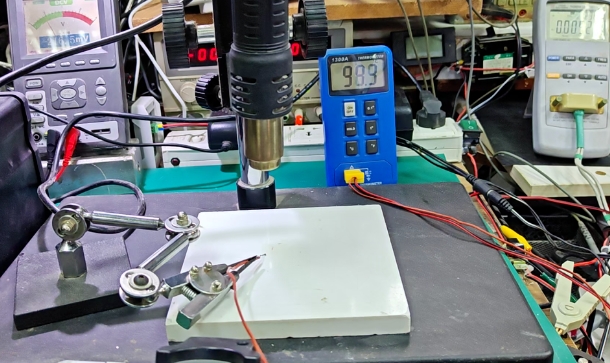
Measure resistance using current excitation method. Use DH1766 to provide 50mA constant current. Use DM3058 to measure the voltage across the resistor. Through changes in voltage, changes in resistance can be evaluated. Record the voltage changes corresponding to the rise and fall in temperature over a two-minute period. picture
First, test the resistance change caused by the temperature of the winding resistance. First heat for about a minute and record the voltage across the resistor during this process. Then turn off the hot air gun and record the change in voltage on the corresponding resistor during the cooling process. It can be seen that when the temperature rises from room temperature to 100 degrees Celsius, the voltage on the resistor changes by about 0.8mV.
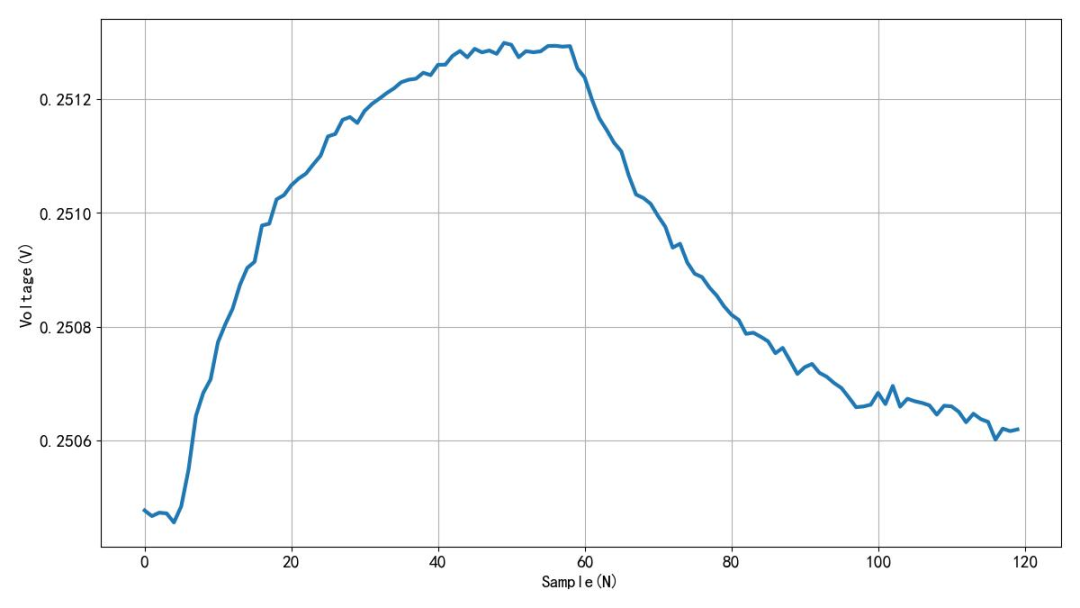
▲ Figure 1.3.1 Changes in resistance during heating and cooling of wire-wound resistors
Next, measure the temperature characteristics of the 5W precision current sampling resistor. The voltage changes by approximately 0.35mV throughout the heating and cooling process.

▲ Figure 1.3.2 5W precision current sampling resistor voltage changes with temperature changes
Measure the temperature characteristics of small current sampling resistors. First heat the resistor for one minute until the temperature rises to 100 degrees Celsius. Next, turn off the heat gun and let the temperature gradually drop. During this process, a constant current of 50mA is still flowing through the resistor. Record the voltage change across the resistor during the entire process. Its voltage changes are so weird. As the temperature rises, the voltage across the resistor drops. This shows that the temperature characteristic of this resistor is actually negative.
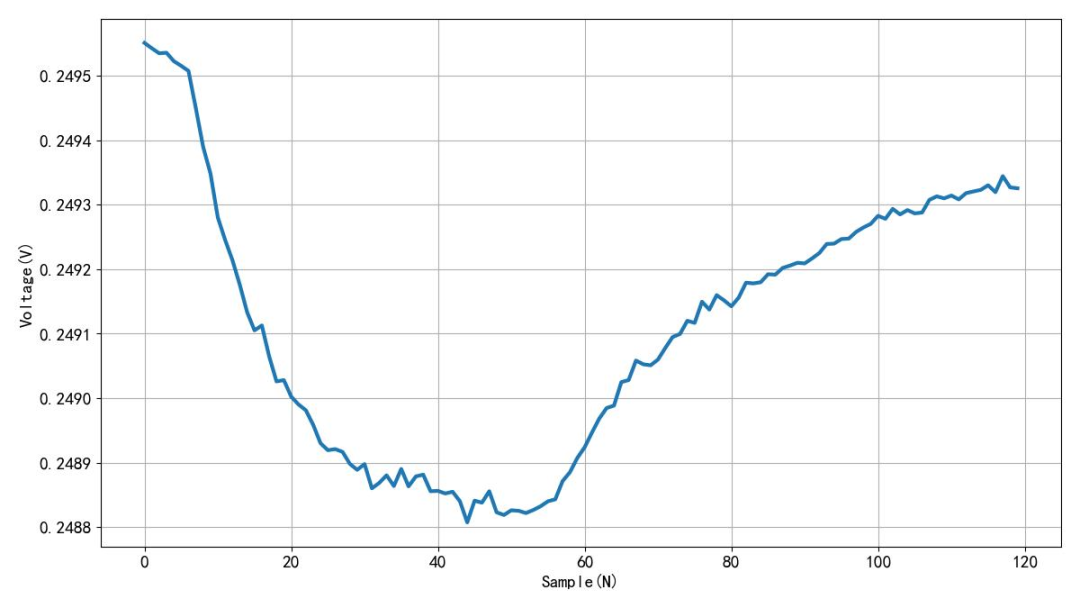
▲ Figure 1.3.3 Changes in voltage of a small current sampling resistor as temperature changes
Compare the temperature characteristics of three power resistors. Both the wirewound resistor and the 5W current sampling resistor have a positive temperature coefficient. Only the precision small current sampling resistor has a negative temperature coefficient. When the temperature is heated from room temperature to 100 degrees Celsius, the resistance changes of the wire-wound resistor and the small sampling resistor are relatively large, while the change of the 5W current sampling resistor is only one-third of them.
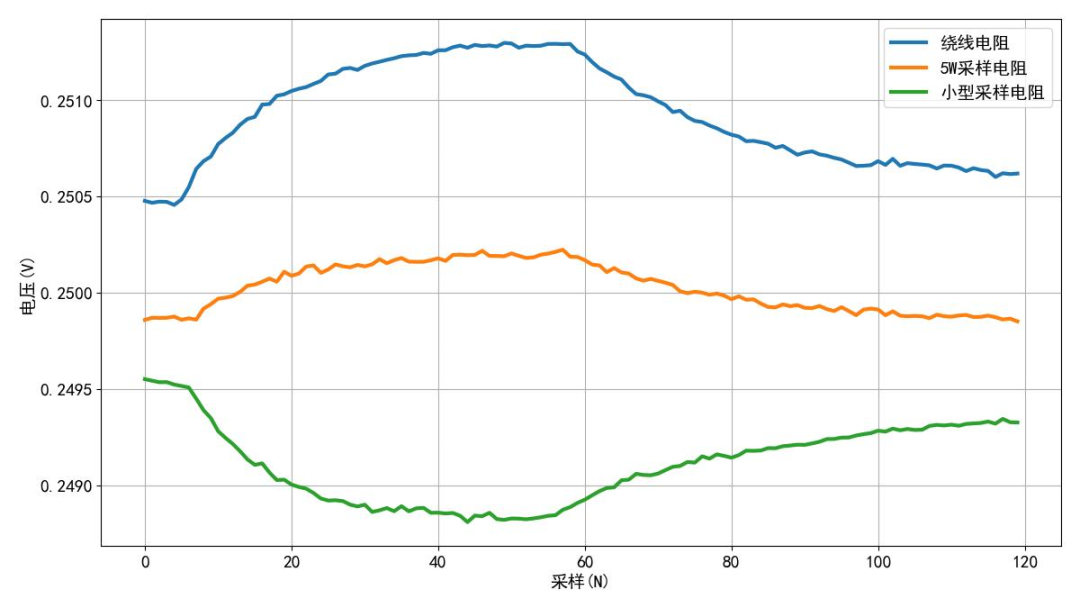
▲ Figure 1.3.4 Temperature characteristics corresponding to the three resistors
Summarize
This article compares three types of power resistors. It can be known from experimental measurements that the accuracy of dedicated current sampling resistors is higher than that of ordinary wire-wound resistors. But their temperature characteristics are actually pretty much the same. Through heating with a hot air gun, the temperature characteristics of the 5W current sampling resistor are the most stable. The small current sampling resistor actually has a negative temperature coefficient.

